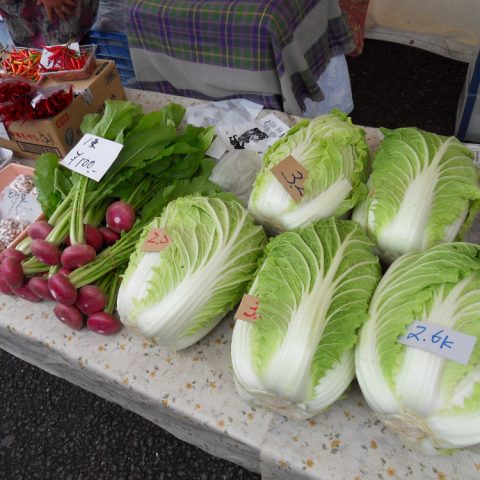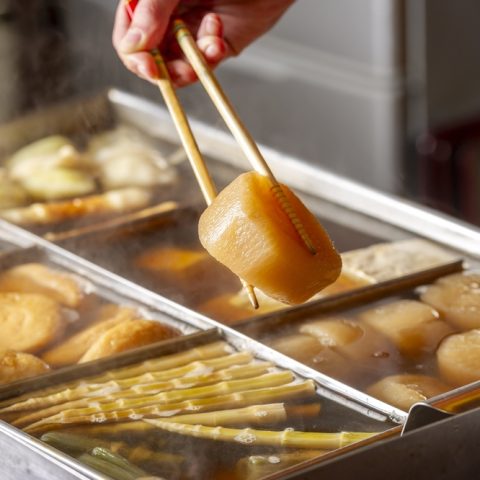
In the embrace of winter, Japan transforms into a tapestry of flavors with Bishunabe at its heart—a culinary gem originating from the sake-brewing district of Saijo in Hiroshima. While people may know Hiroshima for its iconic okonomiyaki, tsukemen, and oysters, the city offers a plethora of delicious foods, including the delightful Bishunabe. In this exploration of history and taste, we embark on a journey that celebrates the roots and the harmonious blend of umami-rich ingredients that define this traditional hot pot.

洗米 / Washing Rice
Photo Credit: Kamokin Brewery
Saijo’s Sake-Brewing Roots and Nutrient-Rich Elegance
Bishunabe finds its origins in Saijo, where sake breweries paint the landscape. Originally known as Bisho Nabe, this humble hot pot was born as a staff meal for sake brewers. The wet uniforms of the brewers, aptly termed “bishonure” or “wet to the skin,” gave rise to the nickname “Bisho,” weaving the dish into the fabric of sake brewing culture. True to its name, Bishunabe, or “beautiful sake hot pot,” is a testament to simplicity and nutritional richness.
The dish’s roots in Hiroshima’s sake-brewing tradition reveal its connection to the local culture. Saijo, famed for its sake, imparts a unique character to Bishunabe, making it a culinary journey through the centuries-old art of brewing.

Bishunabe
Photo Credit: Our Regional Cuisines
Testing Strength and Creating Umami and Family-Friendly Enjoyment
A dish born in the crucible of sake brewing, Bishunabe celebrates the strength of those who toiled in the breweries. The umami-rich profile arises from the careful combination of chicken’s inosinates, vegetables’ glutamates, and sake’s amino acids. The seasoning, deliberately simple, pays homage to the discerning palates of the sake brewers.
Despite its historical ties to the brewery, Bishunabe transcends generational boundaries, offering a warm embrace to all ages. Families and friends gather around the communal pot, sharing not only a meal but also a connection to Hiroshima’s rich culinary heritage.
Traditional Touch and Contrasting Culinary Companions
While Bishunabe shares similarities with another popular dish called shabu-shabu, they dance to different culinary tunes. In shabu-shabu, the star is thinly sliced meat, briefly cooked in boiling broth and dipped in various sauces. Bishunabe, on the other hand, unites all ingredients in one pot, allowing them to harmonize and infuse the broth with their collective essence.

Hiroshima Manhole
Photo Credit: Sake Town Tour, Saijo Hiroshima – Daytime Arigato Japan
Join Us for A Culinary Adventure
For those eager to delve deeper into the heart of Hiroshima’s culinary legacy and experience Bishunabe firsthand, consider joining an immersive tour with Arigato Travel. Our knowledgeable guides will lead you through the cultural tapestry of Hiroshima, offering insights into the city’s rich history and guiding you to hidden gems where Bishunabe takes center stage.
Our tours provide an opportunity to not only savor the flavors of this delightful winter tradition but also to witness the craftsmanship that goes into each pot. With Arigato Travel, the journey becomes a fusion of history, culture, and culinary exploration, as you traverse the picturesque settings of Hiroshima.

Hiroshima Sake Brewery Kanpai
Photo Credit: Arigato Travel
As winter festivities unfold, Bishunabe emerges not only as a celebration of Hiroshima’s sake-brewing legacy but also as a testament to the art of creating umami-rich harmony in a single pot. Join the celebration of tradition and flavor, where each simmering pot of Bishunabe invites you to savor the history and warmth of this beautiful sake hot pot. For those seeking a deeper connection, the tour with Arigato Travel promises an immersive experience in the heart of Hiroshima, where the past and present seamlessly converge, creating memories that linger long after the final bite. Don’t miss the chance to indulge in this delightful winter tradition—reserve your spot today and let Arigato Japan guide you on a journey of taste and discovery!
Feature photo credit: Taberukoto
Learn more about Bishunabe and Sake by joining our Saijo Sake Town tour during your trip to Hiroshima!





